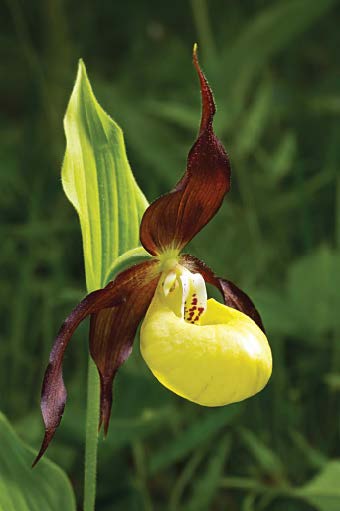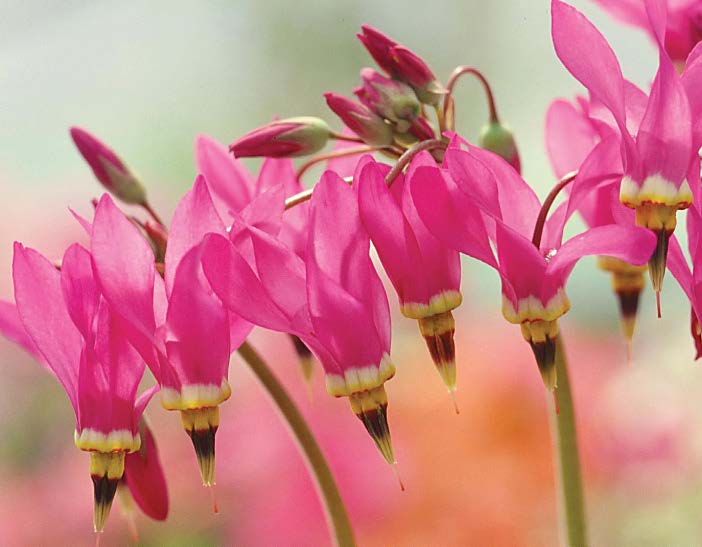completely eradicated the lot of them. By contrast, our wild Saskatoon serviceberry (Amelanchier alnifolia) stays put, blossoms beautifully, and provides us with several arguably better-than-blueberry pies each year, with plenty of fruit left over for the birds.
Early in May, I noticed that our clump of yellow lady’s slipper orchids (Cypripedium calceolus) was just starting to come up, while beside it, a companion clump of shooting stars (Dodecatheon pulchellum) was close to blooming. Forty-some-odd years ago, these two started as refugees from the then– commonly sprayed 2,4-D herbicide. We had advance warning and went out and dug our favorite clump of lady’s slippers plus an unusually large-flower shooting star plant. Our western wood lilies (Lilium philadelphicum) came to our garden in the same way.
You need the best wild plant field guide for your region to know which wildflowers are so rare that you should never remove them from their environment. (Instead, try to protect them where they are.) This is the case with the half-dozen fairy slipper orchid plants


Lady's slipper orchids (above left) and shooting stars (above right) were dug up and relocated to save them from being sprayed with 2,4-D herbicide.
Photos, from left: artenex/Getty Images; onurkurtic/Getty Images